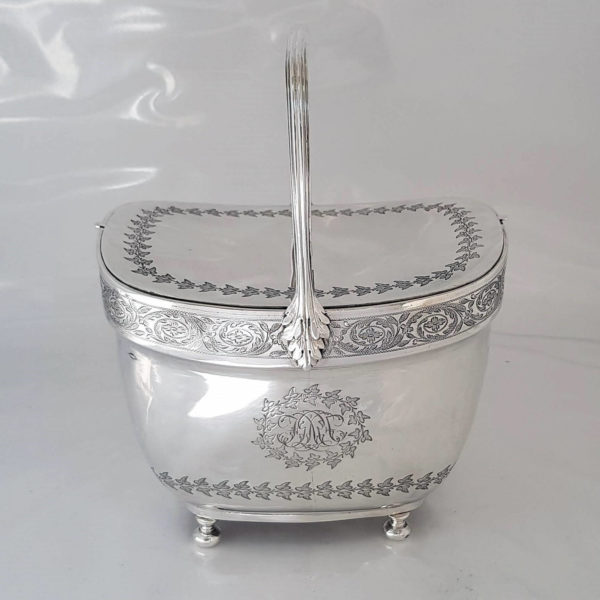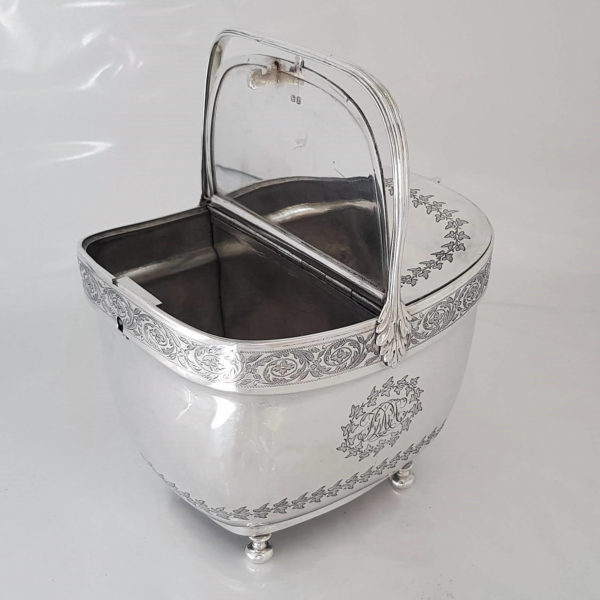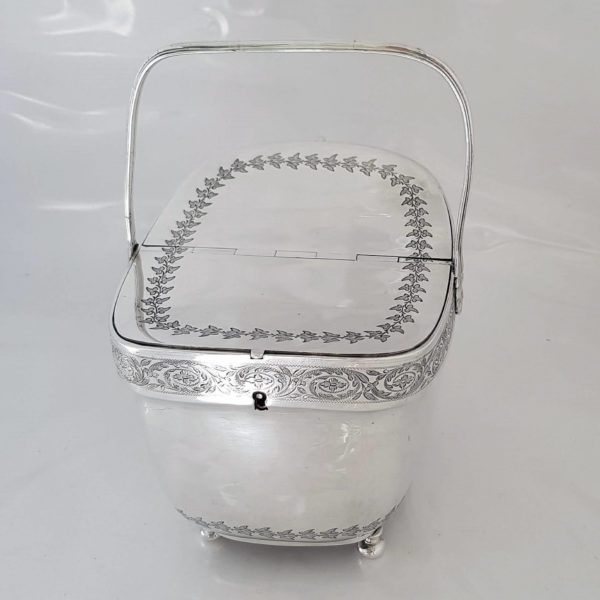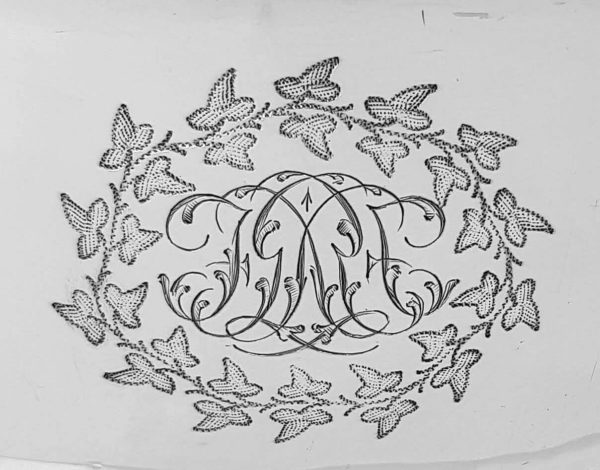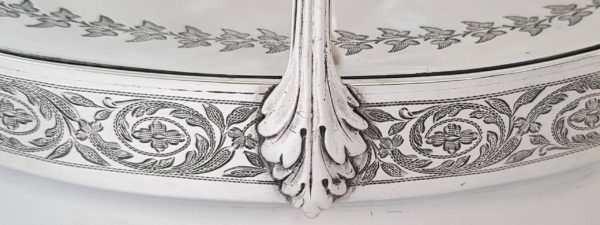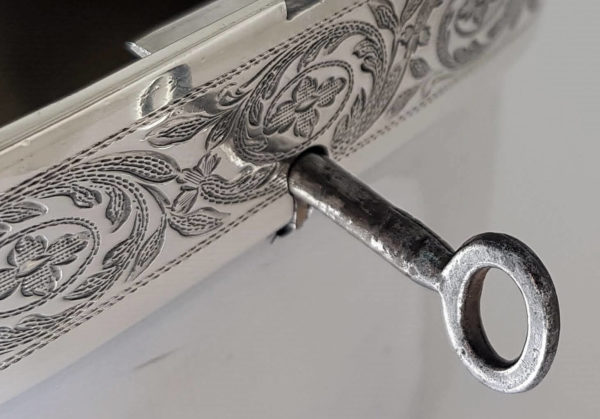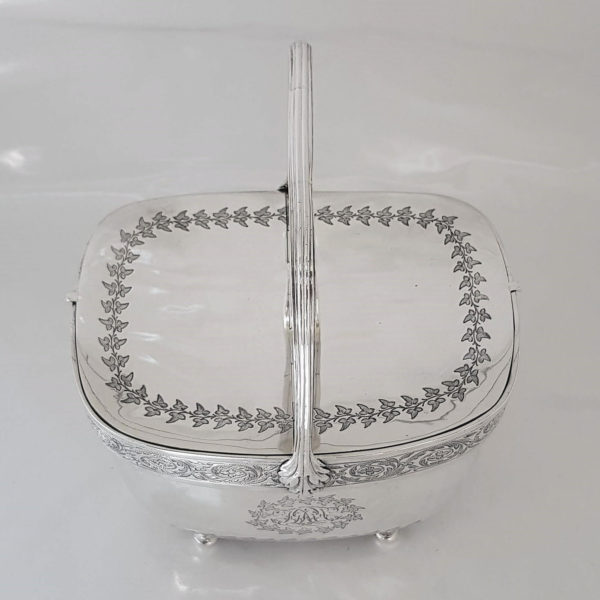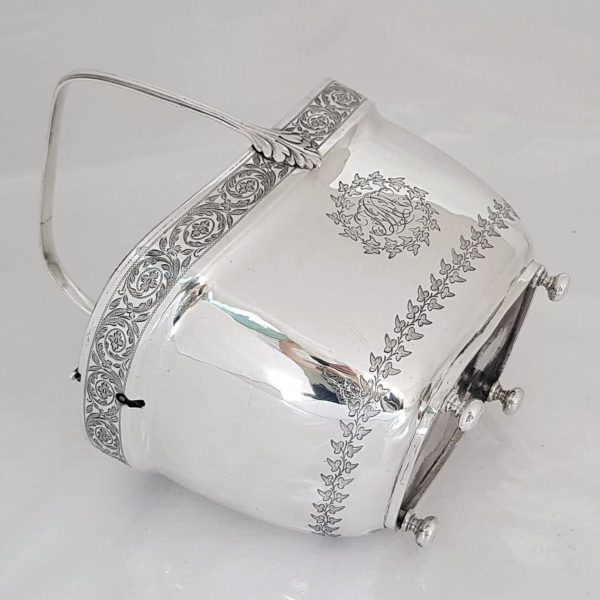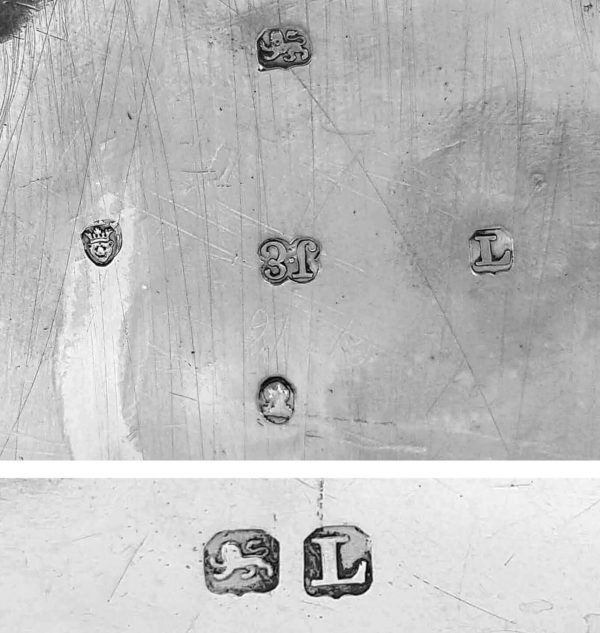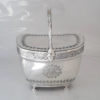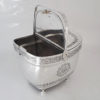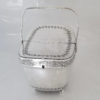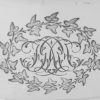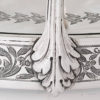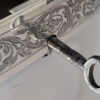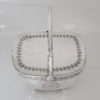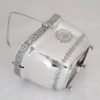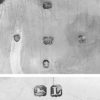George III Silver Tea Caddy
SOLD
Stock: 9872
Date: 1806
Maker: John Emes
Country: England
An unusual antique silver tea caddy box of curved rectangular form. Lovely classic style. This is a double caddy designed...
Description
Description
An unusual antique silver tea caddy box of curved rectangular form. Lovely classic style. This is a double caddy designed for both black and green tea. Beautifully engraved to the lid and body with leaf borders and a thick band of foliate scrolls with interspersed flowerheads. To the front is a monogram in old fashioned script. The fixed carrying handle has a reed and acanthus decoration. The unusual double opening lid has an inset hinge and there is a lock to either side. Key provided.
Weight 661 grams, 21.2 troy ounces.
Height 12.2 cm, 19.6 cm to top of handle. Top measures 15.5 x 12.2 cm.
London 1806.
Maker John Emes.
Marks. Stamped underneath with a full set of English silver hallmarks, the lids are part marked.
Literature. A Tea Caddy is a box, jar, canister, or other receptacle used to store tea. The word is believed to be derived from “catty”, the Chinese pound, equal to about a pound and a third avoirdupois. The earliest examples that came to Europe were Chinese tea canisters in blue and white porcelain with china lids or stoppers. Some of the earliest silver examples have sliding bases (or tops) and the cap was used for measuring the tea. By the mid eighteenth century matching sets were available, with two caddies (for green and black tea) and a sugar bowl, all fitted into a wooden or shagreen case, often with silver mounts. During the late 1700’s the locking silver tea caddy was introduced with its own key which the lady of the house kept on the chatelaine around her waist. Double locking tea caddies in silver are rare.
Condition
In very good condition. Fully functional. The hinges and locks are in working order.
Maker Information
Maker: John Emes
This manufacturing silversmiths, originally established by Anthony Nelme c.1680, passed to Francis Nelme on his death in 1722. Thomas Whipham took over in 1739, passing to his son Thomas Whipham jr 1756 who took Charles Wright as partner. Henry Chawner took over the business in 1786; Chawner had been Edward Barnard I’s master and Barnard’s son Edward became foreman of the firm. John Emes became a partner in 1796 and when Chawner retired Emes took over keeping Edward Barnard II as manager. Emes died in 1808 and his widow Rebecca took Edward Barnard II as partner. Rebecca Emes retired In 1829 and Edward Barnard I became owner, together with his son Edward Barnard II, John Barnard and William Barnard, trading as Edward Barnard & Sons. After the retirement of Edward Barnard I the firm was continued by Edward Barnard II (1846-1851), John Barnard I (1846-1868), William Barnard (1846), Edward Barnard III (1868), Walter Barnard (1868-1903), John Barnard II (1868-1903), Michael Barnard (1896-1903), Stanley Barnard (1896-1903) and Robert Dubcock (1896). The firm became a limited liability company in 1910 as Edward Barnard & Sons Ltd. In 1977 Edward Barnard & Sons Limited became a subsidiary of Padgett & Braham Ltd
Our Guarantee
Customer satisfaction is our primary concern
All silverware on our website is checked thoroughly prior to offering it for sale and every product listing contains a condition report and details of the silver hallmarks.
All items offered on our website include:
- Free Shipping Worldwide
- Tracked and Insured
- 14 day no quibble money back guarantee
- We are accredited members of LAPADA and conform to their strict professional standards
- We dispatch 1-3 days after receiving cleared payments
More detailed information about deliveries, returns and how to pay is available in the Help section at the bottom of this page.
